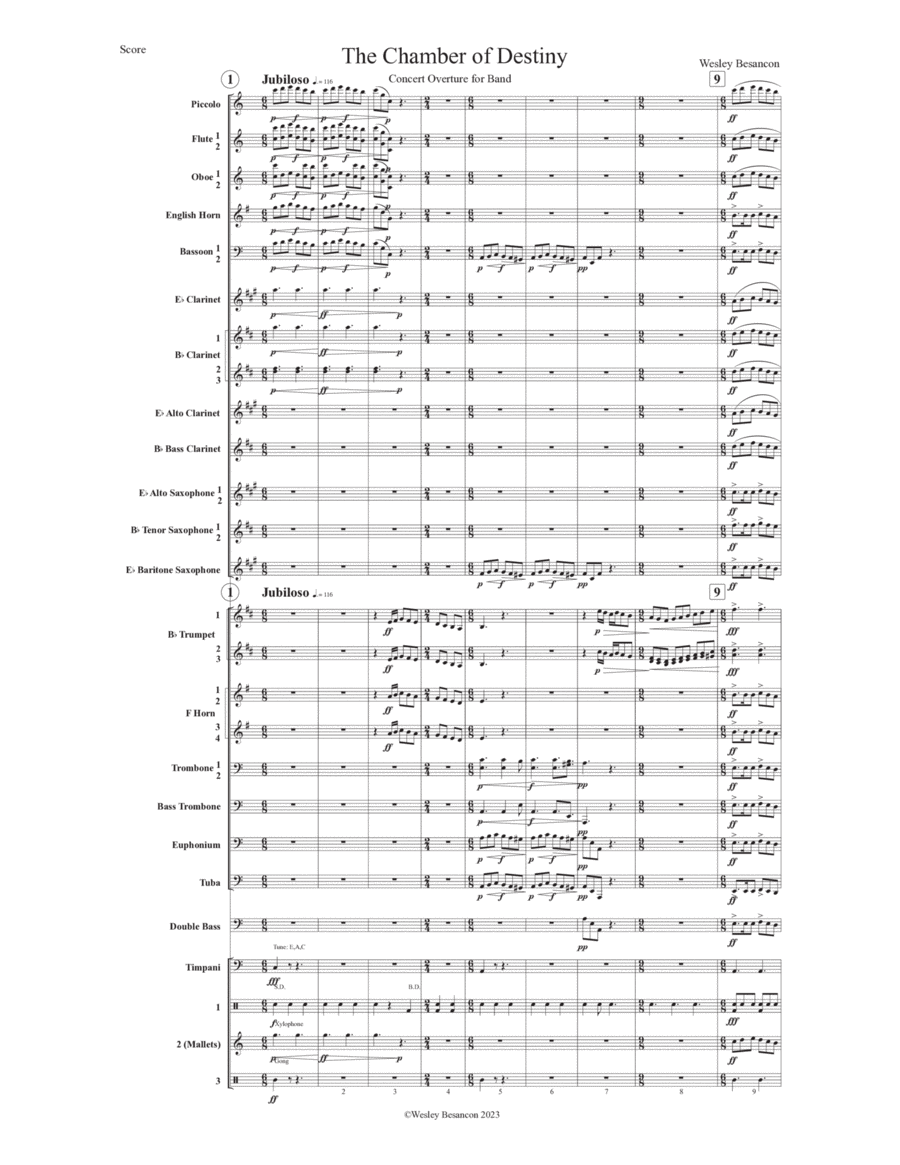Concert Band - Level 4 - Digital Download SKU: A0.1247130 By Wesley Besancon. By Wesley Besancon. Arranged by Wesley Besancon. 21st Century,Contemporary,Contest,Festival,New Age. Score and Parts. 82 pages. Wesley Besancon #841685. Published by Wesley Besancon (A0.1247130). Have you ever wondered about why we are impulsive, why we make descisions, and why they are always somehow the correct decision for character? Well, this piece is a programatic piece about a person that is in a forest. This person will find a hidden cabin, and will enter it. And he will discover the true meaning of life. This piece is also a dedication piece to some of my closest friends. DECICATIONS: The Allmans, Lauren Johnson, Parker Peterson, Jaxson Salter.
